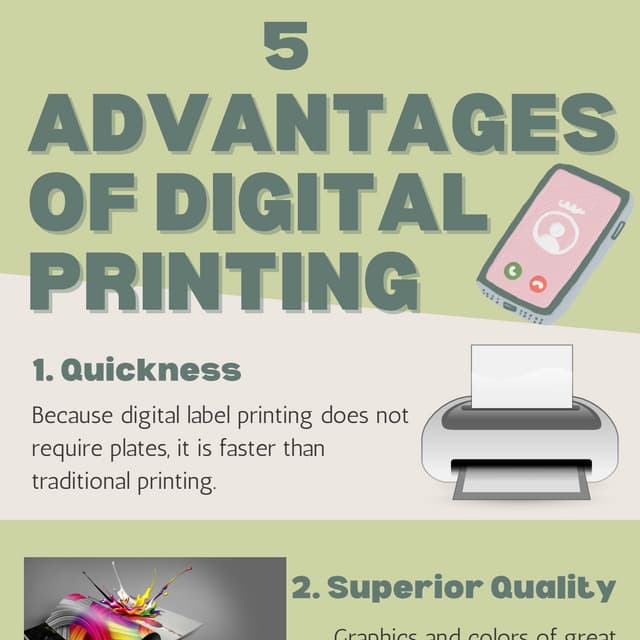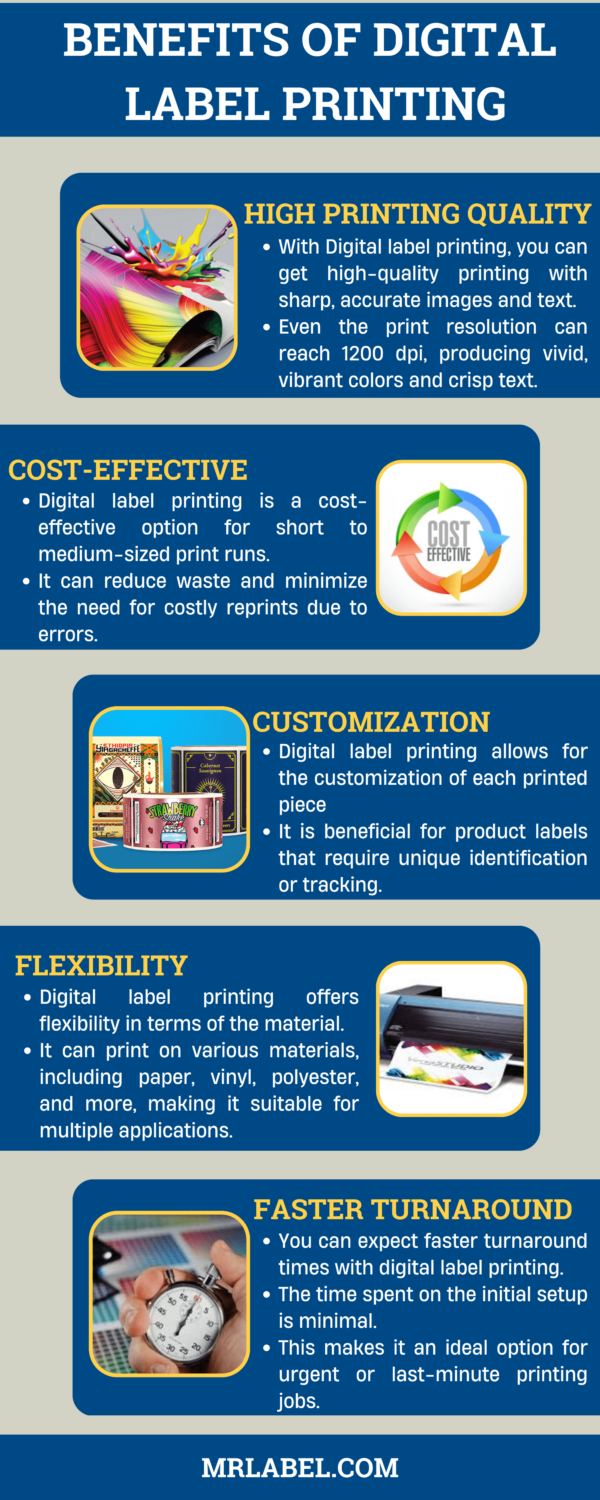Get This Report on Digital Printing
Table of ContentsExamine This Report about Digital PrintingDigital Printing for BeginnersSome Ideas on Digital Printing You Need To KnowExcitement About Digital PrintingDigital Printing Things To Know Before You BuyUnknown Facts About Digital Printing
Variable data printing, such as straight mail with personalized codes and addresses, is preferably matched for digital printing. Digital fast printing just needs four steps of style, testimonial, printing and binding to obtain everything done. Digital quick printing has an exceptional benefit: print on need.According to PMMI, digital printing enables brands and makers to react promptly to consumer needs while improving the supply chain, decreasing warehousing expense and waste, and appreciating faster time to market. That all audios great, but how does this technology do all that? The major differentiator of these technologies is that there are no set-up fees and no plates with digital printing.
Digital Printing Things To Know Before You Get This
According to Wikipedia, the best difference between electronic printing and typical methods such as lithography, flexography, gravure, or letterpress - Digital Printing is that there is no demand to replace printing plates in digital printing, whereas in these analog printing approaches the plates are consistently changed. This causes quicker turnaround time and decreases expense when using electronic printing.
Digital printing is highly versatile, so it's very easy to make changes to the plan design quickly. It all goes back to the plates.
Extra inventory can mean even more waste down the roadway. With conventional printing approaches, short-run printing is simply not possible. Due to the fact that a wonderful design can make or damage your item, digital printing regularly develops premium, clear and colorful graphics each time. Digital printing on flexible pouches adds the intense, vibrant, and accurate graphics that virtually bid customers to reach out and touch them.
Digital printing is the process of printing digital-based pictures directly onto a range of media substratums. There is no need for a printing plate, unlike with offset printing. Digital data such as PDFs or desktop publishing data can be sent directly to the electronic printing press to print on paper, photo paper, canvas, fabric, synthetics, cardstock and other substrates.
Get This Report about Digital Printing
According to PMMI, digital printing permits brand names and producers to respond quickly to consumer needs while enhancing the supply chain, decreasing warehousing cost and waste, and enjoying faster time to market. That all audios terrific, but just review how does this modern technology do all that? The major differentiator of these technologies is that there a fantastic read are no set up charges and no plates with digital printing.
According to Wikipedia, the greatest distinction between electronic printing and standard approaches such as lithography, flexography, gravure, or letterpress is that there is no demand to change printing plates in electronic printing, whereas in these analog printing techniques the plates are repetitively replaced. This leads to quicker turn-around time and decreases price when using digital printing.

An Unbiased View of Digital Printing
With traditional printing approaches, short-run printing is just not feasible. Due to the fact that an excellent layout can make or break your product, digital printing constantly develops top quality, clear and vibrant graphics each time.

According to find more info PMMI, electronic printing allows brands and suppliers to respond swiftly to consumer demands while improving the supply chain, minimizing warehousing price and waste, and appreciating faster time to market. That all sounds wonderful, but exactly how does this innovation do all that? The significant differentiator of these innovations is that there are no set up fees and no plates with digital printing.
The Basic Principles Of Digital Printing
According to Wikipedia, the greatest distinction in between electronic printing and standard techniques such as lithography, flexography, gravure, or letterpress is that there is no requirement to replace printing plates in digital printing, whereas in these analog printing methods the plates are consistently changed. This causes quicker turn-around time and reduces expense when utilizing digital printing.
Digital printing is extremely versatile, so it's easy to make adjustments to the package layout swiftly. It all goes back to the plates.

4 Simple Techniques For Digital Printing
Digital printing is the procedure of printing digital-based images directly onto a variety of media substratums. There is no need for a printing plate, unlike with balanced out printing. Digital documents such as PDFs or desktop posting files can be sent straight to the digital printing press to publish on paper, picture paper, canvas, textile, synthetics, cardstock and other substrates.